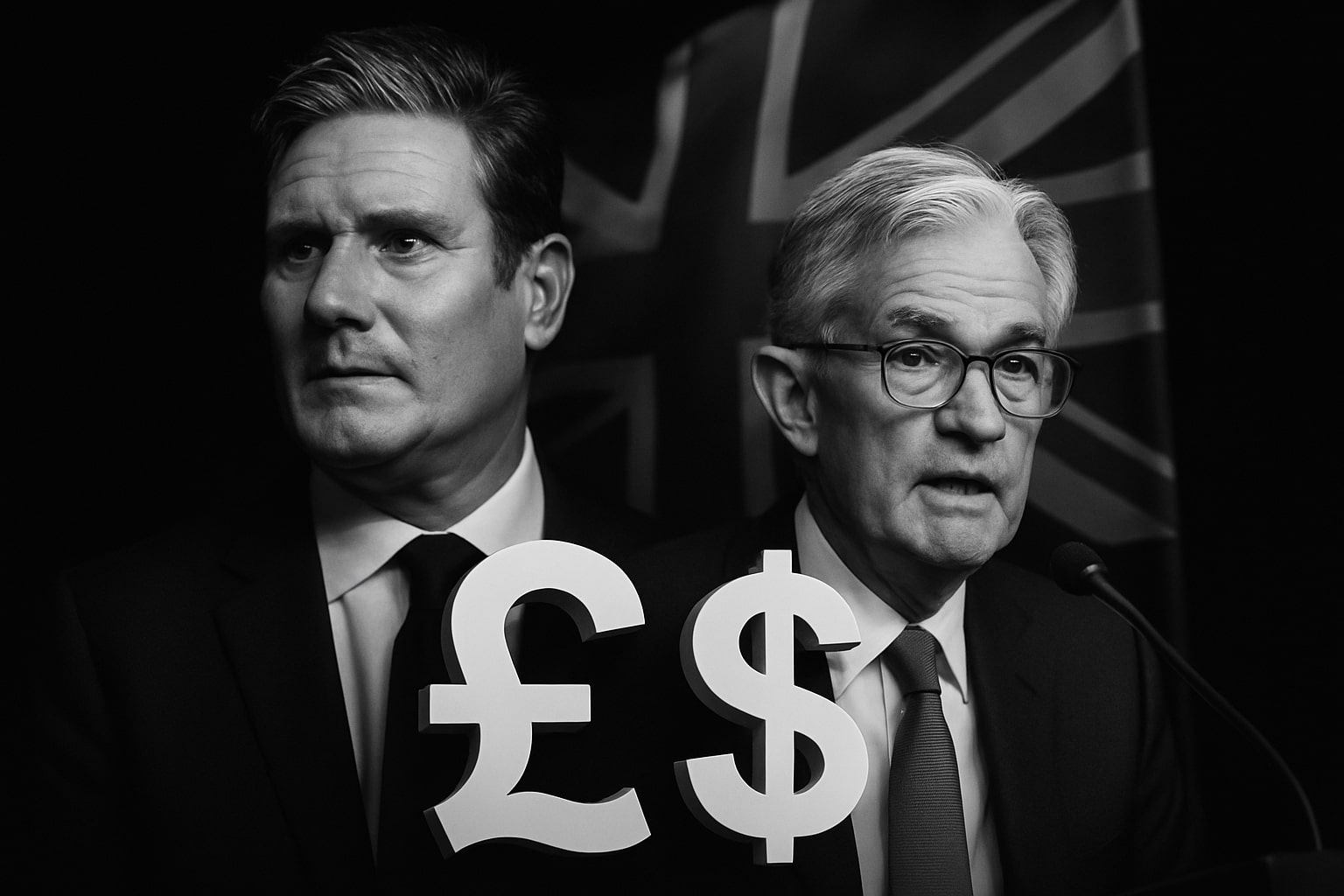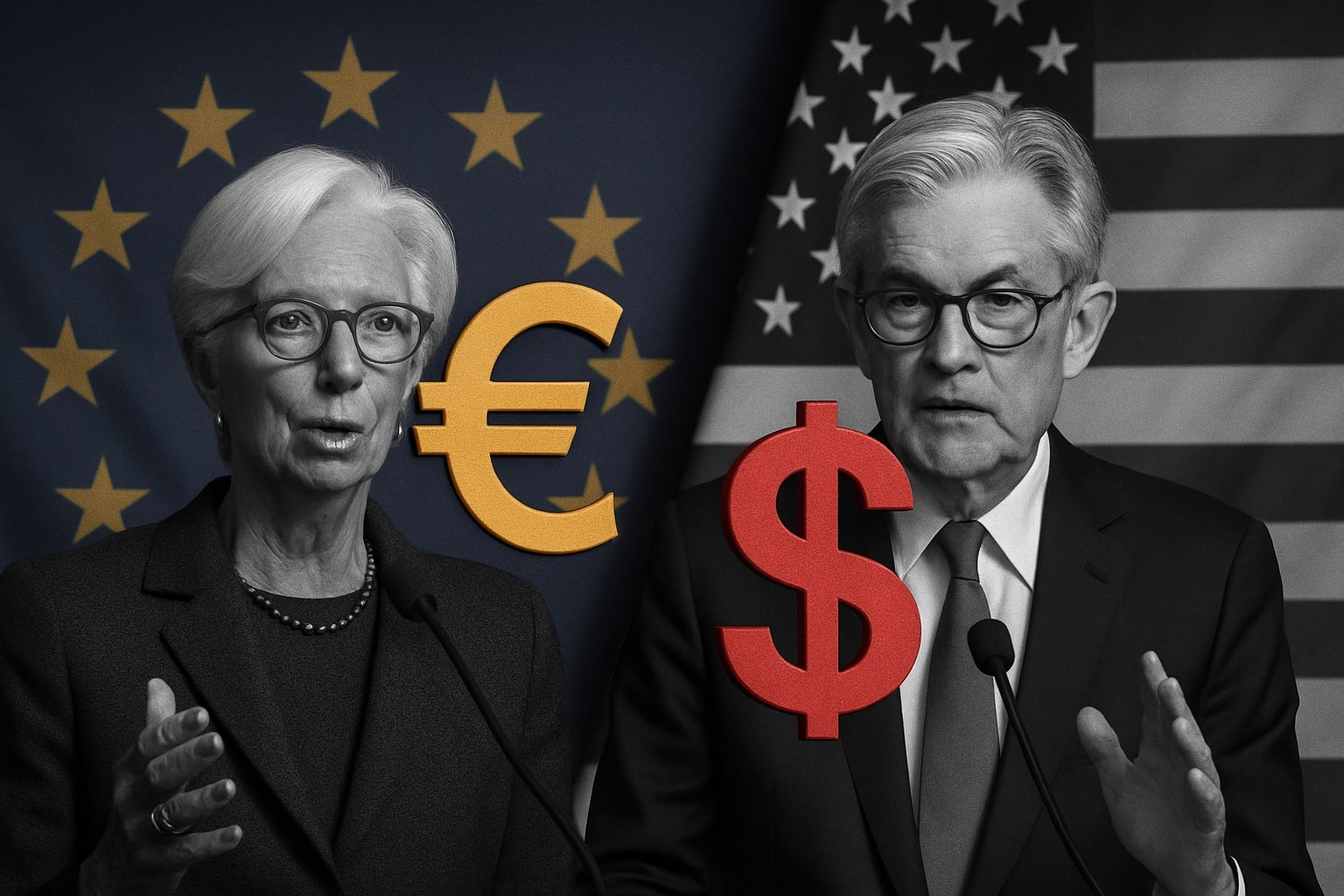
GBP/USD Price Forecast - Pound Steadies at 1.3150 as U.S. Shutdown Progress Lifts Sentiment
The Pound (GBP/USD) trades around 1.3150, buoyed by U.S. shutdown optimism yet restrained by the Bank of England’s 5-4 vote and soft U.K. growth signals | That's TradingNEWS
GBP/USD Tests 1.3150 as U.S. Shutdown Progress and Bank of England Split Vote Collide with Soft Dollar Momentum
The British Pound (GBP/USD) has stabilized near 1.3150, attempting to recover from a volatile week defined by political maneuvering in Washington and monetary hesitation in London. Traders have been recalibrating positions as the U.S. Dollar Index (DXY) trades around 99.60, balancing shutdown optimism against a dovish repricing of the Federal Reserve’s December rate expectations.
The Cable remains tethered to a narrow range as investors digest multiple crosscurrents — the Senate’s progress toward ending the 40-day U.S. government shutdown, dovish rhetoric from Fed officials Daly and Musalem, and a 5-4 split vote at the Bank of England (BoE) that reinforced speculation of a December rate cut. The result is a market trapped between short-term optimism on U.S. fiscal clarity and lingering pressure from weaker U.K. growth indicators.
Political and Monetary Crosscurrents Push GBP/USD Into Tactical Range
The resolution of the U.S. shutdown has acted as a temporary stabilizer for risk appetite, briefly lifting GBP/USD to 1.3170, but each rally has faded as traders face a structural divergence between the BoE and Fed. The U.K. central bank’s decision to hold rates at 4% — with four members voting to cut — underscored the fragility of domestic inflation momentum. Inflation now sits near 2.8%, the closest to the 2% target in nearly three years, prompting derivative markets to price 60% odds of a rate cut in December and 70% by Q1 2026.
Governor Andrew Bailey’s cautious tone signaled that policy adjustments hinge on confirming continued disinflation through incoming employment and GDP data. Traders are therefore watching this week’s Q3 GDP estimate and jobless claims closely, both seen as the decisive indicators before the December meeting.
On the U.S. side, FOMC speakers continued their dovish chorus. Mary Daly emphasized “contained inflation in goods,” while Alberto Musalem noted that headline inflation remains closer to 3% than the Fed’s 2% target, reinforcing expectations for early-2026 easing. Combined with weak U.S. consumer sentiment (50.3) and rising inflation expectations (4.7%), the macro backdrop left the dollar steady but vulnerable.
Data-Driven Volatility: U.K. GDP, Jobs, and U.S. CPI in Focus
Markets are positioned for a data-heavy sequence that could break the GBP/USD standoff. The U.K. employment report (Tuesday) is forecast to show wage growth slowing from 5.8% to 5.2%, supporting the BoE’s dovish tilt. Thursday’s GDP release is expected at 0.1% QoQ, reinforcing stagnation fears. A downside surprise would cement December easing bets, potentially driving Cable toward 1.3020–1.2960, where multi-month support converges.
Across the Atlantic, traders await CPI, PPI, and Retail Sales to gauge how much economic drag the government shutdown imposed. The Fed’s inflation gauge remains subdued, with Cleveland Fed inflation expectations at 3.5%, down sharply from the June peak of 4.1%, a sign that rate-cut talk is becoming more anchored in data rather than speculation.
Market Positioning and Derivative Flow: Sterling Bears Hold Control
Institutional flow data shows a subtle shift in market sentiment. The ICE positioning report recorded a decline in speculative longs on GBP, while options desks have increased put hedges at 1.3050–1.2950. The skew now favors downside protection, reflecting caution into Thursday’s GDP data.
Derivative traders remain defensive, with 1-month implied volatility at 8.3%, up from 7.5% last week, highlighting expectations of a potential breakout. Volume in GBP/USD futures climbed 12% week-over-week, led by leveraged funds rebalancing amid shifting Fed/BoE policy paths.
The divergence between short-term interest rate futures shows that while the Fed Funds curve implies roughly 60% probability of a December cut, U.K. Sonia futures price nearly full probability of easing within two meetings — a critical factor weighing on Sterling’s medium-term trajectory.
Technical Dynamics: Sterling at Crossroads Between 1.30 and 1.33
Technically, GBP/USD faces stiff resistance at 1.3250, where both the 20-day and 200-day SMAs (1.3254/65) intersect. This confluence has repeatedly capped recoveries since mid-October. On the downside, 1.3100 serves as immediate support, followed by 1.3020, the November 4 low, and then 1.2967, marking the April trough.
Momentum oscillators lean bearish: the RSI at 36 signals limited buying power, while a developing Bear Cross — with the 21-day SMA slipping below the 200-day SMA — adds structural downside risk. A decisive break below 1.3020 could expose 1.2850, the psychological line of defense for Sterling bulls.
Conversely, a push above 1.3170–1.3200 may trigger stop-driven momentum toward 1.3250 and potentially 1.3390, where the 50-day SMA caps historical rebounds. Still, unless the U.K. macro data surprises positively or the Fed pivots sharply dovish, the upside remains constrained.
Macro Correlations and Cross-Currency Context
The EUR/GBP pair’s slide below 0.88 reinforced relative Sterling demand but also masked broader weakness against the USD. Analysts from ING note that further downside in EUR/GBP toward 0.8750–0.8760 could attract strong demand, while GBP/USD remains dependent on policy divergence rather than cross-euro positioning.
Meanwhile, risk correlations show Sterling’s correlation with U.S. equity indices rising to 0.71, suggesting Cable’s short-term rallies are tied to S&P 500 (SPX) recoveries. However, this sensitivity to risk sentiment cuts both ways — any retracement in U.S. stocks could reintroduce haven demand for the dollar, undermining GBP near 1.31.
Read More
-
JEPQ ETF (NASDAQ:JEPQ) Climbs Toward $59 as 10.3% Yield and $31B AUM Cement Its Status as JPMorgan’s Income Powerhouse
10.11.2025 · TradingNEWS ArchiveStocks
-
XRPI & XRPR ETFs Rally Over 8% as XRP Trades Above $2.53 — DTCC Listings Ignite Institutional XRP ETF Boom
10.11.2025 · TradingNEWS ArchiveCrypto
-
Natural Gas Price (NG=F) Surges Above $4.40 as Record LNG Exports and Tight Storage Ignite Bullish Winter Rally
10.11.2025 · TradingNEWS ArchiveCommodities
-
USD/JPY Price Forecast - Dollar/Yen Steadies Near 154.00 as U.S. Fiscal Optimism Offsets BoJ Policy Caution
10.11.2025 · TradingNEWS ArchiveForex
Structural Outlook: From Political Relief to Policy Confrontation
The Senate’s progress on the shutdown bill, cheered by President Donald Trump, has restored temporary calm but hasn’t changed underlying rate path dynamics. The fiscal reopening could boost near-term demand but also widen the U.S. deficit, a factor likely to reappear in DXY volatility later in the quarter.
The BoE’s data-dependent stance, coupled with slower wage growth, leaves Sterling vulnerable to any confirmation of disinflation. Traders now treat the BoE’s December meeting as the next inflection point — either confirming the start of an easing cycle or delaying it until Q1 2026.
TradingNews Verdict: HOLD Bias with Downside Risk Toward 1.30
Based on technical structure, macro divergence, and institutional positioning, TradingNews maintains a HOLD bias on GBP/USD with a bearish tilt. The pair’s current consolidation around 1.3150 reflects fragile equilibrium: bullish forces anchored in U.S. shutdown optimism are countered by dovish expectations from both central banks.
Short-term traders should monitor 1.3170 resistance and 1.3020 support — breaks beyond these levels could define the next leg. Sustained closes below 1.30 would confirm a renewed bearish phase targeting 1.2850, while a break above 1.3250 could trigger short-covering toward 1.34.
Until clarity emerges from U.K. data and the Fed’s tone solidifies, GBP/USD (Cable) remains a tactical market caught between policy hesitation and fragile confidence — a battlefield where every basis point and data print dictates direction.



















